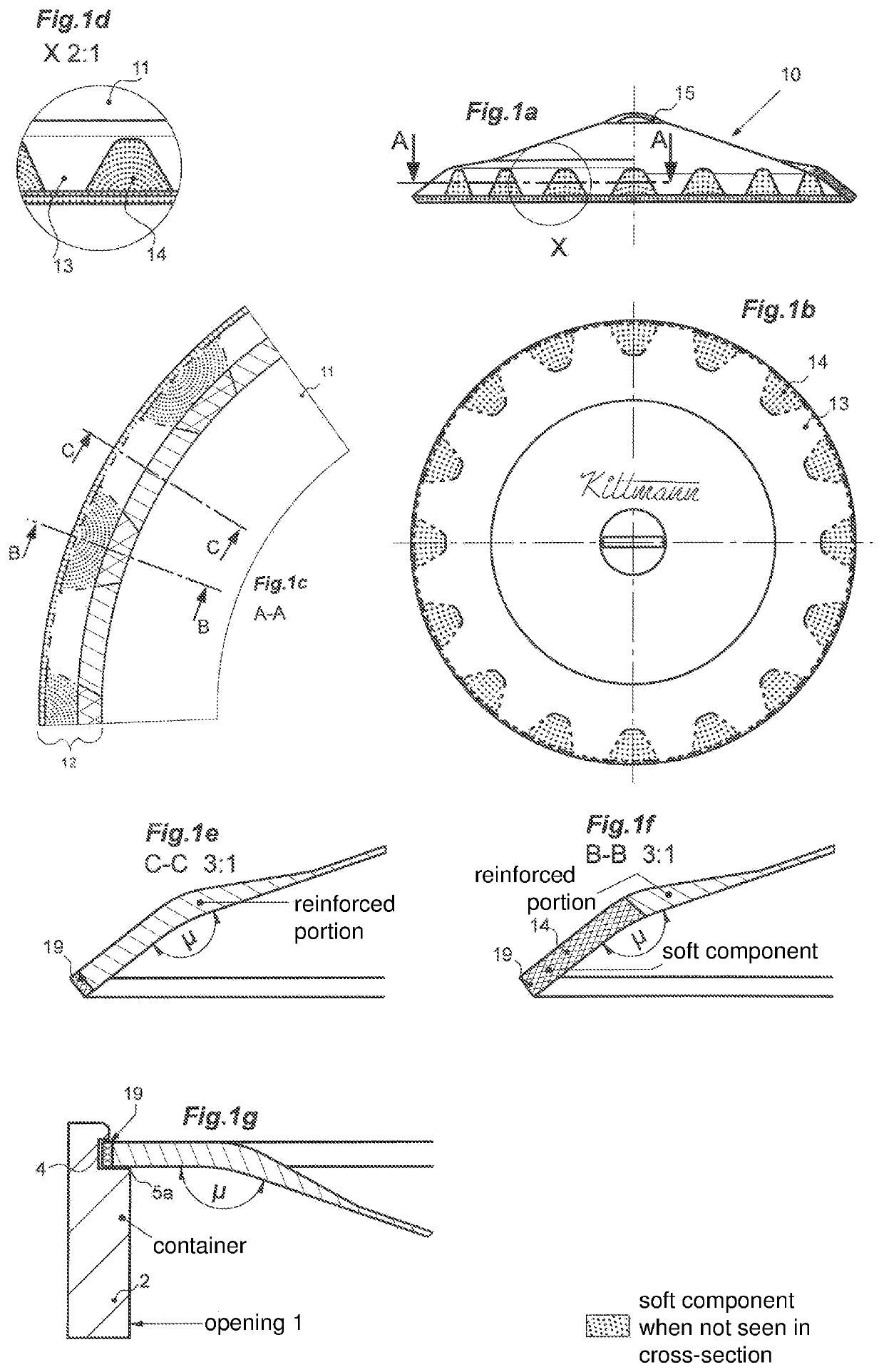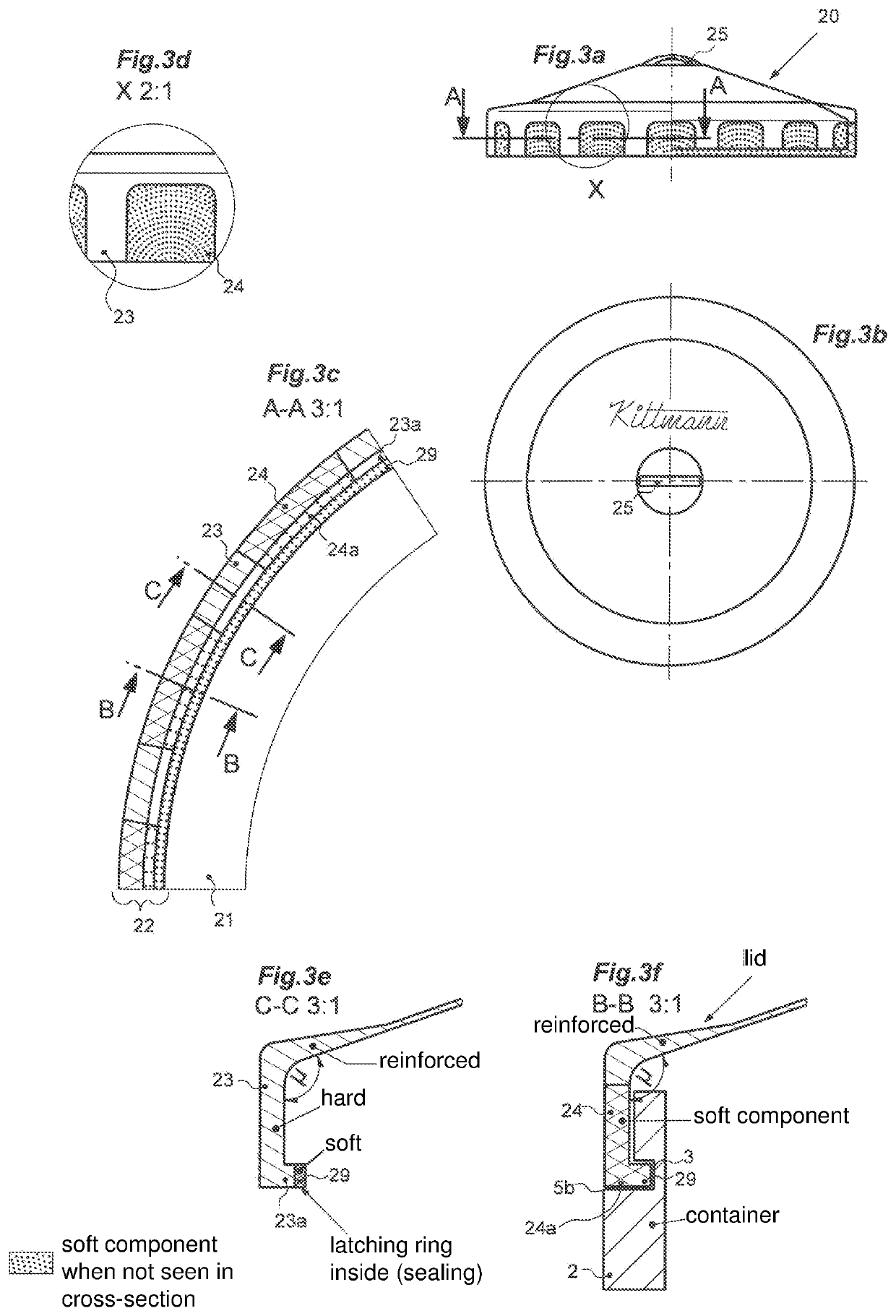Snap cap in multi-component injection molding technology
a multi-component injection molding and snap cap technology, applied in the direction of transportation and packaging, closures with lifting/suspension means, other domestic articles, etc., can solve the problems of known click-clack caps and far only available in metal materials, and achieve the effect of expanding their applicability
- Summary
- Abstract
- Description
- Claims
- Application Information
AI Technical Summary
Benefits of technology
Problems solved by technology
Method used
Image
Examples
first embodiment
[0054]FIGS. 2a to 2c show the operation of a closure system according to the invention, in which the lid 10 of the first embodiment for closing the opening 1 is used. The wall portion 2 of the opening 1 to be closed has an annular groove 4 inside, in which the lid 10 is to engage, and which has a shoulder 5a at its lower edge.
[0055]When introducing the lid 10 from above into the opening 1, the edge portion 12 will abut with the latching ring 19 against the shoulder 5a. As a result, the user knows that he has reached the intended axial end position of the lid 10 for locking. If the user now presses the front wall 11 down (best by a force F1 on the handle member 15 vertically downwards), the front wall 11 switches from its convex bistable state shown in FIG. 2a in its concave bistable state shown in FIG. 2b. Due to the stiffness of the lid material in the transition region between the front wall 11 and the edge portion 12, which is preferably supported by material thickening, the angl...
second embodiment
[0059]In the second embodiment shown in FIGS. 3 and 4, the cover according to the invention is no longer a lid engaging from the inside into the opening to be closed, but formed as a cap 20 embracing the opening 1 to be closed from the outside. FIGS. 3a to 3f all show the cap 20 in its convex position cambered outwardly (i.e. opposite to the direction of attachment), i.e. its closed position. It is additionally shown in FIG. 3f how in this position, a latching into the opening wall 2 to be closed is possible, which will be explained in more detail in FIGS. 4a to 4c.
[0060]As with the lid 10 in the first embodiment, the cap 20 has a substantially circular or disc-shaped front wall 21, which continues into an annular edge portion 22. In the transition region between the front wall 21 and the edge portion 22, the material thickens again, as can be seen in FIGS. 3e and 3f, to ensure that the angle μ (not drawn in FIGS. 3e and 3f but shown in FIG. 4a) remains constant also in the concave...
PUM
| Property | Measurement | Unit |
|---|---|---|
| constant angle | aaaaa | aaaaa |
| constant angle | aaaaa | aaaaa |
| constant angle | aaaaa | aaaaa |
Abstract
Description
Claims
Application Information
 Login to View More
Login to View More - R&D
- Intellectual Property
- Life Sciences
- Materials
- Tech Scout
- Unparalleled Data Quality
- Higher Quality Content
- 60% Fewer Hallucinations
Browse by: Latest US Patents, China's latest patents, Technical Efficacy Thesaurus, Application Domain, Technology Topic, Popular Technical Reports.
© 2025 PatSnap. All rights reserved.Legal|Privacy policy|Modern Slavery Act Transparency Statement|Sitemap|About US| Contact US: help@patsnap.com



